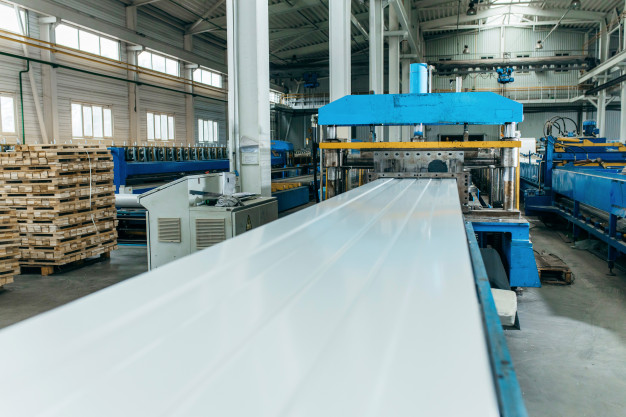The manufacturing industry depends a lot on machining and sheet metal fabrication to meet the ongoing demands of its clients. Both the processes hold equal importance and aid the manufacturers to make the best use of their resources to deliver exceptional outcomes. The sheet metal industries rely on sheet metal fabrication and machining processes to produce customized products to meet the order deadlines and ensure the maximum level of customer satisfaction. Although machining and sheet metal fabrication have a lot in common, still, there are some points that set them apart.
What is Machining?
Machining is one of the sheet metal fabrication processes in which a piece of raw material is cut into a specific size and shape with the assistance of a precisely controlled material-removal process to turn it into a final product.
What is Sheet Metal Fabrication?
Sheet metal fabrication involves a combination of different processes in which the flat sheets of multiple metals like steel or aluminum are transformed into metal products or structures. The complete fabrication process involves seven steps, which are as follows:
- Casting: The liquid metal is poured into a mold of the desired shape, and then allowed to cool down. When the molten metal cools down, it turns into a solid shape known as casting.
- Joining: It involves the joining of two metal components together using cold forming operation.
- Forming: The process in which the sheet of metal is given a desired shape by applying force on the piece of metal required to be bend or stretch.
- Machining: The removal of the excess sheet of metal from the workpiece to give it the required shape, accuracy, and finish.
- Surface working: Surface treatments, such as coating, are done on the sheet metal’s surface to provide excellent features like rust resistance, smooth finish, and others.
- Additive manufacturing: Multiple layers of sheet metal are deposited one over the other to create the desired 3D product with enhanced surface quality.
- Powder metallurgy: Powdered material is mixed with adhesive, poured into the mold, and then compressed, sintered, and cooled before taking out from the mold.
Difference between Machining and Sheet Metal Fabrication
- Raw Material: In the sheet metal fabrication process, metals are transformed into the desired product or structure by cutting, punching, folding, and assembling. On the other hand, in machining various pieces of raw materials other than metals, such a plastic, ceramics, and wood are also cut to transform them into the desired product.
- Operation process: The fabrication process is about making a metal structure or product by processing the sheets of metal through a range of applications, whereas machining involves a single process in which the excess materials are cut off the workpiece to turn it into the required size and shape.
- The shape of the material: The material passed through the machining process is a solid round bar, plates, or tube metals. On the other hand, the material passed through the fabrication process is flat sheets of metals.
- The difference in precision: The tolerance of the machined parts is more precise in comparison to the sheet metal fabrication parts.
- The time involved: Sheet metal fabrication involves a range of processes through which a sheet of metal is passed through to produce the product of required size, and shape and that consumes a lot of time. On the other hand, machining is a single process that can be done quickly without compromising the quality of the output.
- Finishing: The sheet of metal processed through the fabrication process does not require further processing and is ready to deliver to the respective client. Contrarily, the raw materials processed through the machining process requires further processing like surface treatment and others before they are delivered to the clients.
The article can help people who are still confused with the Machining and Sheet metal fabrication process. The sheet metal fabricators use the fabrication process to make robust materials that can meet the emerging demands of the industrial sector. Some parts can be made by the machining process, and some parts can be made by the sheet metal fabrication process, whichever suits the best for the fabricator. Opting for any of the processes in daily operations, the sheet metal fabrication industries can enhance their production capacity and attain growth as well as success in the competitive market.



